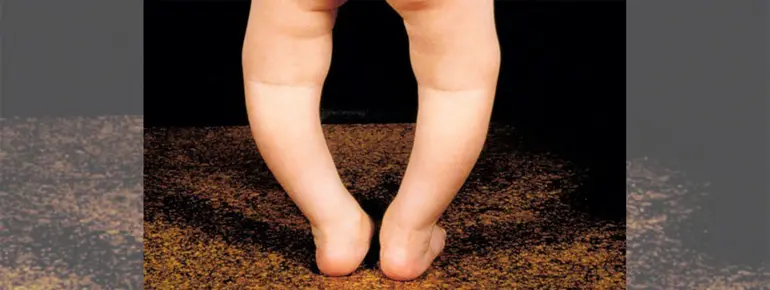- Sunshine Hospitals, Secundrabad
- Sunshine Hospitals, Gachibowli
- Udai Omni Hospitals, Nampally, Hyderabad
- Rainbow Children’s Hospitals, Vikrampuri, Secundrabad
- Secunderabad nursing home, west maredpally.
Working Time
Book Appointment

Introduction:
Bow legs, medically known as genu varum, is a condition characterized by outward curvature of the legs, causing them to bend outward at the knees while the feet and ankles are together. While mild bow legs are common in infants and toddlers, persistent or severe cases may require medical intervention. In this blog, we'll delve into the causes, symptoms, and treatment options for bow legs.
Causes of Bow Legs:
Normal Development: Bow legs are common in infants and toddlers as a normal part of development. Babies are born with bow legs due to the positioning in the womb, and the legs gradually straighten as they grow and start walking.
Nutritional Deficiencies: In some cases, bow legs may result from nutritional deficiencies, particularly vitamin D and calcium, which are essential for healthy bone growth and development.
Blount's Disease: Blount's disease is a rare growth disorder that affects the growth plates in the shinbone (tibia), leading to abnormal bowing of the legs. This condition typically manifests in early childhood and requires medical treatment.
Symptoms of Bow Legs:
Outward curvature of the legs, particularly noticeable when the child stands or walks.
Gait abnormalities, such as waddling or awkward walking patterns.
Knee pain or discomfort, especially with increased activity or weight-bearing.
Treatment Options:
Observation: In many cases, mild bow legs in infants and toddlers resolve on their own as the child grows and develops. Regular monitoring by a pediatrician or orthopedic specialist is recommended to ensure proper progression.
Nutritional Supplementation: If bow legs are attributed to nutritional deficiencies, supplementation with vitamin D and calcium may be prescribed to support healthy bone growth and development.
Bracing: In children with persistent or severe bow legs, orthotic braces may be recommended to help straighten the legs and promote proper alignment. Bracing is most effective when initiated during early childhood while the bones are still growing and flexible.
Surgical Intervention: In rare cases of severe or progressive bow legs, surgical intervention may be necessary to correct the alignment of the legs and prevent further complications. Surgical procedures may involve osteotomy (bone cuts) or guided growth techniques to realign the bones and restore normal leg alignment.
Seeking Expert Care:
For the best bow legs treatment in Secunderabad, parents can rely on Dr. Vidyasagar, the leading pediatric orthopedic surgeon specializing in pediatric orthopedic care. With his expertise, compassion, and dedication to excellence, Dr. Vidyasagar offers comprehensive evaluation, personalized treatment plans, and ongoing support for children with bow legs and their families.
Don't delay in seeking the best care for your child with bow legs. Contact Dr. Vidyasagar, the top pediatric orthopedic surgeon in Secunderabad, for expert evaluation and treatment. Ensure your child receives the best possible care and achieves optimal outcomes in managing bow legs.
Conclusion:
Bow legs can pose challenges for children, but with early intervention, appropriate treatment, and expert care from specialists like Dr. Vidyasagar, children with bow legs can experience significant improvements in leg alignment and function. By addressing the underlying causes and implementing tailored treatment plans, we can empower children with bow legs to lead active and healthy lives.
Recent Posts
- Correcting Bow Legs: Exploring Causes, Symptoms, and Effective Treatments
- Building Strong Bones in Kids: Essential Foods for Healthy Growth
- Unlocking Erb's Palsy: Unveiling Causes, Symptoms, and Treatment Avenues
- Navigating Cerebral Palsy: Exploring Treatment Paths and Expert Guidance
- Safeguarding Kids from Falls and Slips: Prioritizing Bone Health for a Happy Childhood
- Staying Healthy This Rainy Season: Precautions And Tips for Children
- Guide to Selecting the Ideal Running Shoes for Flat Feet
- Understanding Radial Club Hand: Signs, Symptoms, and Treatment Options
